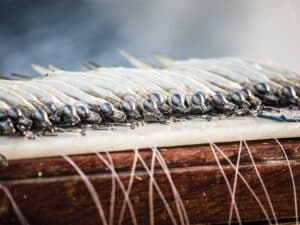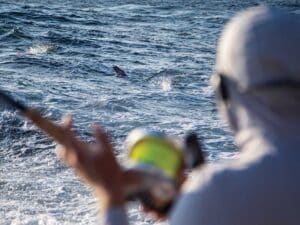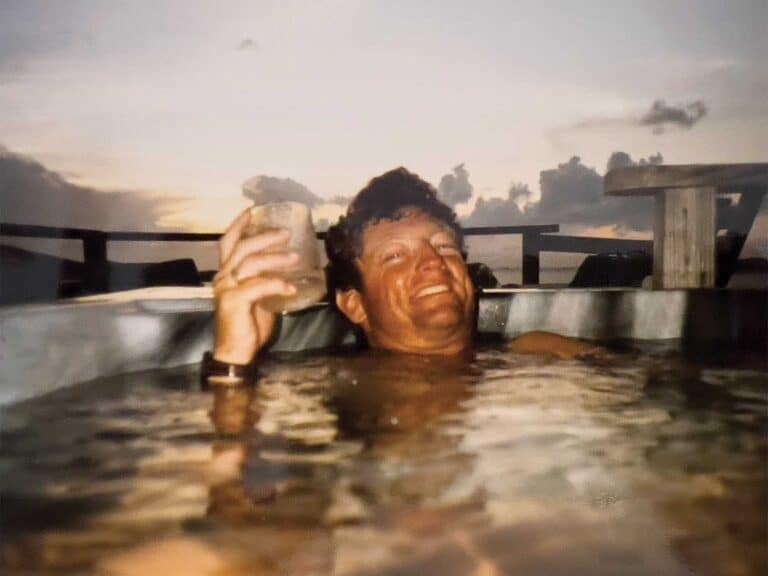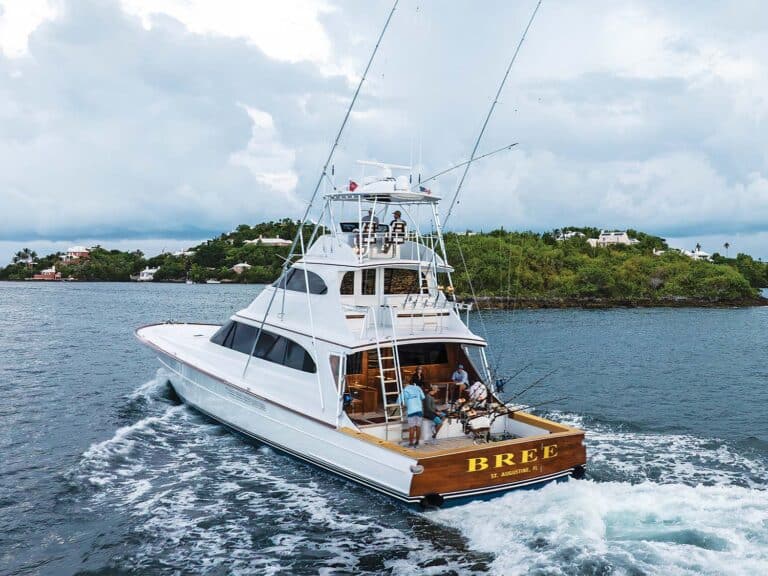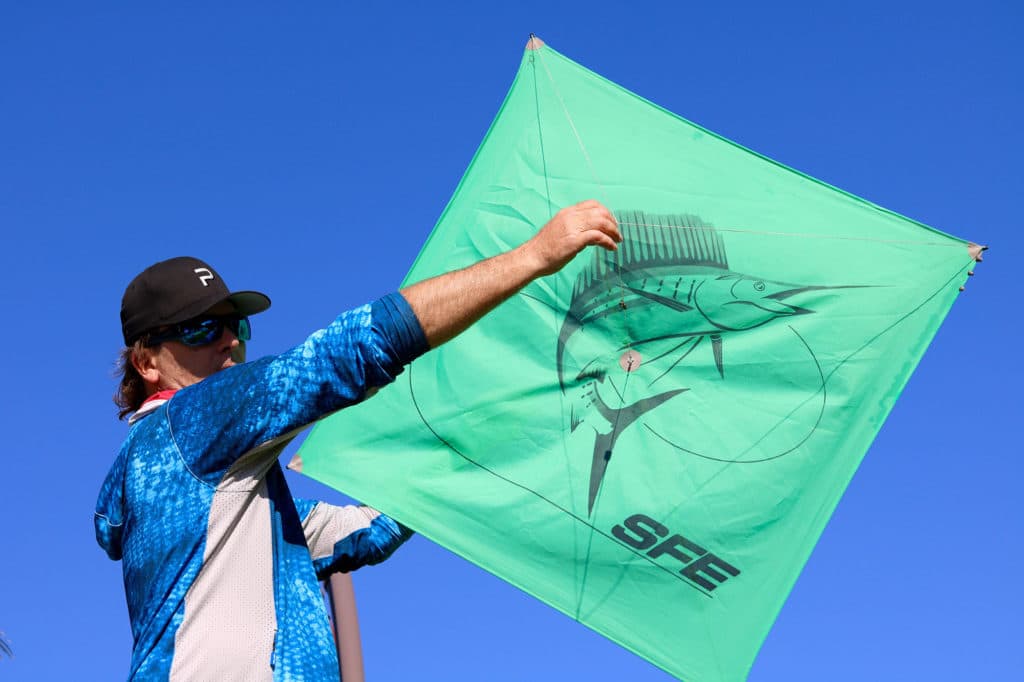
Dangling a few lively baits from a fishing kite is one of the most effective methods for catching almost any species of saltwater game fish, but kite-fishing is especially productive for sailfish off South Florida.
Adjust the Bridle
All fishing kites are equipped with an adjustable bridle to allow the kite to catch more or less wind. Depending on how heavy or light the wind is blowing on a particular day, the bridle should be moved to optimize the kite’s performance. The size and weight of the live bait, and the number of baits, flown from a single kite will also have an effect on the height at which the kite flies. The size of the main line and weight of the terminal tackle can also impact kite performance.
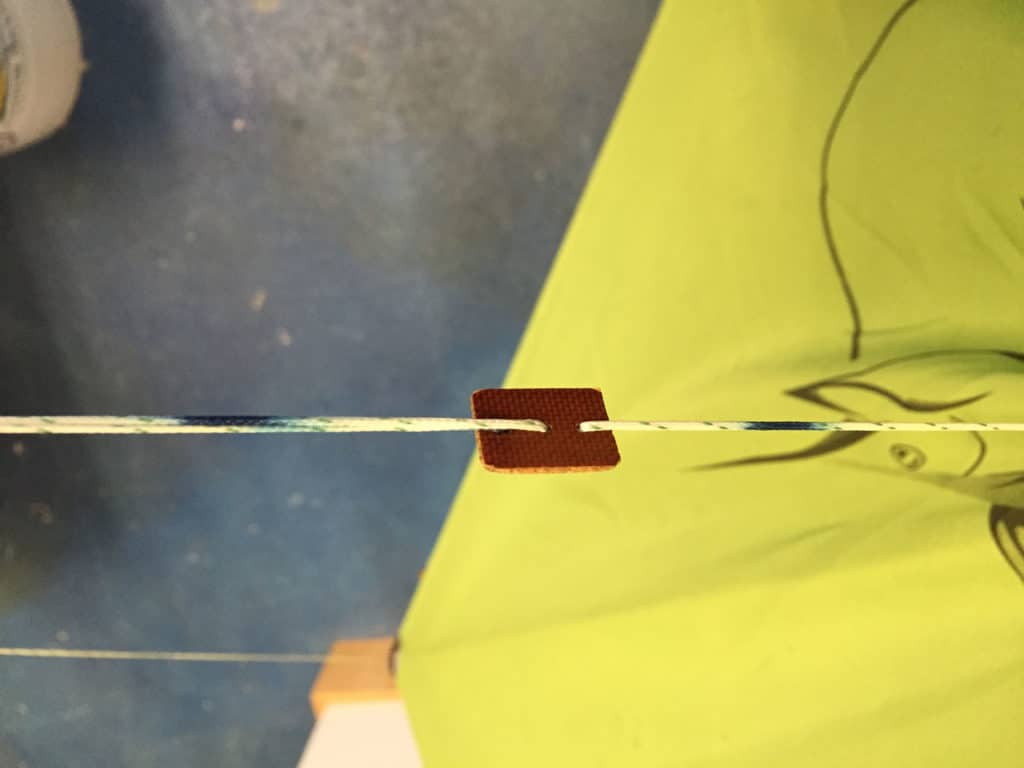
After assembling the kite, you’ll see two marks on the kite bridle and an adjustable bridle slide. One of the marks will be black and the other red. Moving the bridle slide up toward the kite will shorten the bridle, allowing less wind to get under the kite. Moving the bridle slide away from the kite will lengthen the bridle, allowing more wind to get under the kite. On days with moderate to heavy wind, you should move the slide towards the kite so it will catch less wind and fly at a good height. On light-wind days, it’s important to adjust the slide down to lengthen the bridle. This will allow more wind to pick up the kite so that it flies at the desired height. You might need to make several adjustments during any given day depending on varying wind conditions.
Spreading the Kites
An important part of effectively fishing live bait from kites is the ability to present multiple baits and cover as much area as possible. A kite with no weights attached will fly straight off the kite rod and often directly behind the boat. If you are flying multiple kites, it is important to get the kites to spread out in different directions.
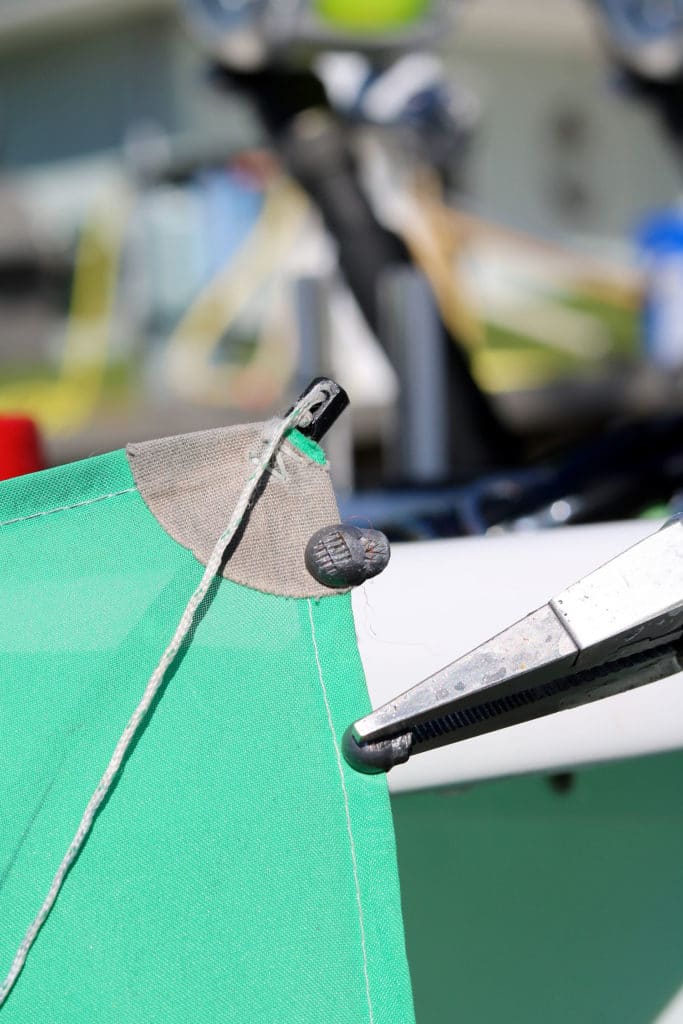
To get your kite to fly to the right, start by attaching a small split shot weight to the upper right corner of the kite fabric. This will tilt the kite to the right and make it fly in that direction. If you want it to fly to the left, attach the split shot to the upper left side of the kite and it will tilt and fly left. The heavier the wind, the more split shots you can add. A wider spread will allow you to cover a greater area with your baits and attract more fish.
Yo-Yo Kite Line Storage
Replacing a kite line at sea can be a frustrating and a time-consuming task, so you should never leave the dock without having extra kite lines rigged and ready to go. Starting at the kite, measure 110 feet of 65-pound-test braided line back to the first swivel or clip position; attach the smallest barrel swivel to one end and leave the other end bare. At the bare end, wrap this section to a large plastic yo-yo spool until you get to the small barrel swivel. Attach and wrap two additional 65-foot sections around the yo-yo, with each swivel being one size larger than the first. Loop a rubber band to the largest barrel swivel and secure it to the yo-yo.
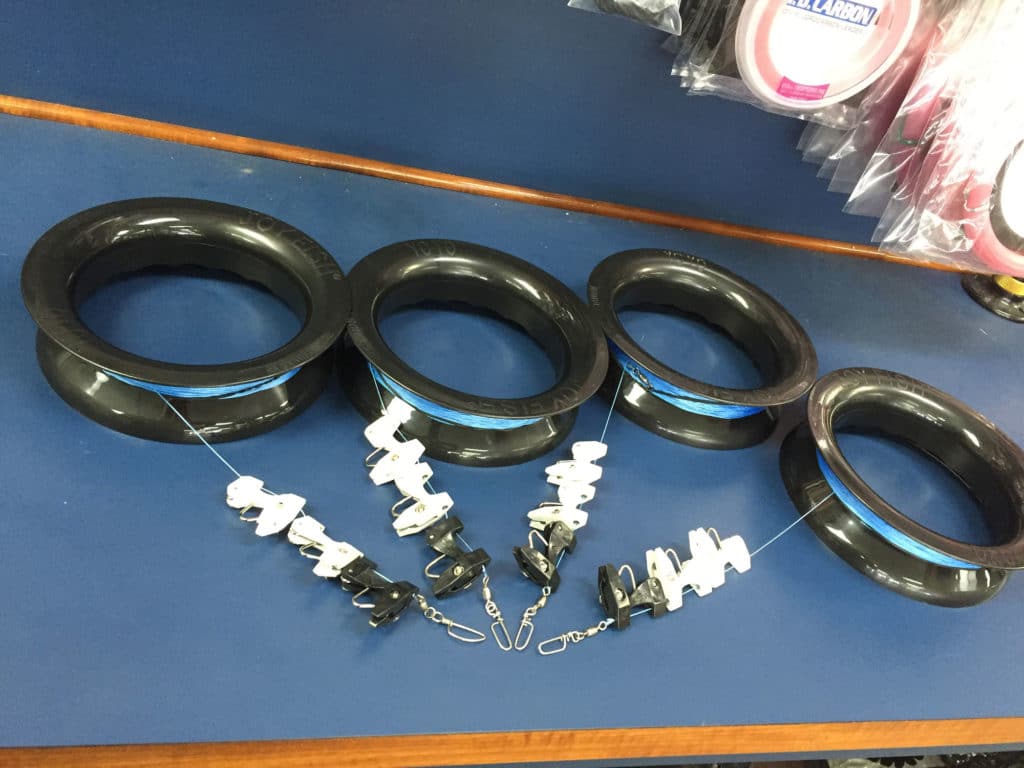
Now, when you snap a kite line or see that the line is frayed and about to break, you can simply remove the old line, tie the new kite line to the reel and wind on a new line. Slide your release clips — largest to smallest — onto the new line, tie a snap swivel to the end and attach it to the kite.

